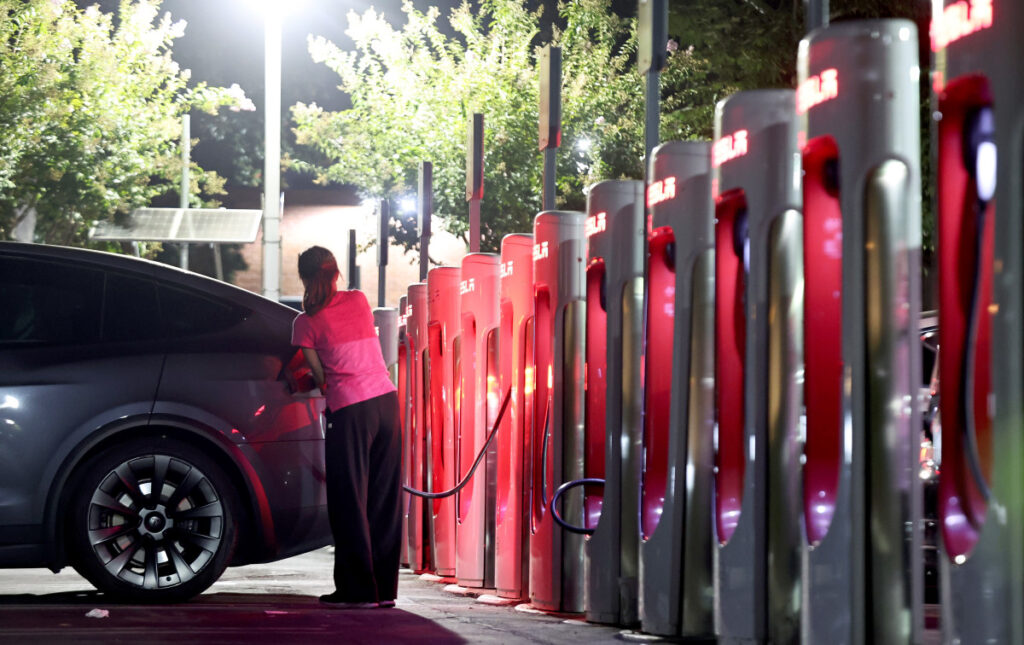Despite all the benefits of electric vehicles, one major caveat that makes them slightly more inconvenient is the very act of charging.
While fueling up a gas-powered car can take just a few minutes, charging time largely depends on what kind of charger you plug an EV into. A DC “fast charger” can take less than ten minutes, while other public EV chargers in parking lots can take up to a few hours.
Related: Stellantis seeks new CEO amidst fervent auto industry pressure
That is a lot of time spent not driving. Even with the longest-range EVs on the market, stopping frequently to charge up on road trips or long drives can eat into precious travel time.
However, while potential EV owners may find this aspect of ownership to be a huge dealbreaker, a new study shows that installing publicly available EV chargers can have unintentional benefits.
Seeing Green
According to a new study from MIT, there is a benefit to having EV chargers located near businesses.
The researchers examined the relationship between local businesses and EV chargers and investigated spending patterns at businesses within 500 meters (about 0.3 of a mile) of EV charging locations in California, as well as other similar businesses that weren’t as closely adjacent to a plug.
They found that installing a nearby charging station boosted consumer spending by almost $23,000 in 2019 and $3,400 per year from 2021 through June 2023.
The researchers used data from 2019 through June of 2023 and skipped the year 2020 to minimize the impact of the pandemic. The study’s lead author Yunhan Zheng said in a statement that the decline reflected in the 2019 to the 2021-2023 data might be due to a saturation of EV chargers leading to lower utilization, as well as an overall decrease in spending per business and number of operating businesses after the COVID-19 pandemic.
More Business of EVs:
- Waymo finds new way to bring chaos to quiet city streets
- Gavin Newsom’s ‘EV mandate’ is under U.S. Supreme Court threat
- BMW’s clever, new EV app is a privacy nightmare
MIT’s findings also show that a select few types of businesses benefit more than others from having an EV charging station nearby, with coffee shops, restaurants, and convenience stores showing the biggest revenue increase.
Additionally, the researchers found that the chargers played a role in shaping local economies and revitalizing certain areas, especially underserved, disadvantaged, and low-income areas.
“The positive impacts of EV charging stations on businesses are not constrained solely to some high-income neighborhoods,” co-author Wang said in a statement. “It highlights the importance for policymakers to develop EV charging stations in marginalized areas, because they not only foster a cleaner environment, but also serve as a catalyst for enhancing economic vitality.”
Related: Stellantis seeks new CEO amidst fervent auto industry pressure
Although the data from the MIT researchers shows that EV owners will use the time spent charging to eat, get a cup of coffee, or visit businesses adjacent to the chargers, additional data suggests there is also an incentive to making EV charging feel like filling up a gas tank at a gas station.
According to data published in AutoPacific’s EV Consumer Insights Study, the majority of American EV owners feel that public chargers should be well lit, should be covered the ways gas stations are, display signage indicating clear pricing and offer basic vehicle care services like windshield cleaners, air pumps, and vacuums, as well as Wi-Fi access.
Additionally, Zheng believes that the findings can also teach developers what to build around the charging stations they build.
“The joint gas station and convenience store business model could also be adopted to EV charging stations,” Zheng said. “Traditionally, many gas stations are affiliated with retail store chains, which enables owners to both sell fuel and attract customers to diversify their revenue stream. EV charging providers could consider a similar approach to internalize the positive impact of EV charging stations.”
Related: Veteran fund manager sees world of pain coming for stocks
